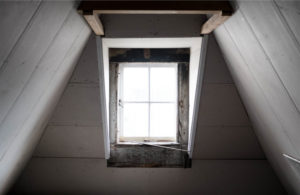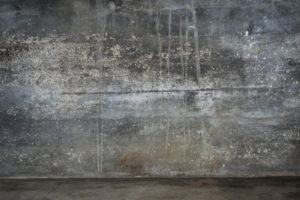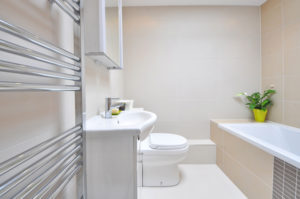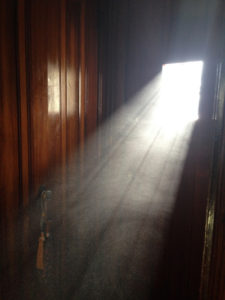
Mold is never something you want to find in your home. It can have bad effects on your health, destroy your personal items, and discolor your home’s materials. The problem with mold however, is it’s a quiet problem. Mold will sneak up on you because of the hard to spot and easy to ignore warning signs. A small discolored spot or a slow drip of water may be all the warning you get that your home is growing mold.
That being said, it is unlikely that mold is everywhere in your home. To grow, mold needs the correct temperature, a food source, and adequate moisture. We’ve listed common places in a home that meet these requirements more often than not and that should be checked regularly for mold.
Clean and Inspect the Most Common Places for Mold Growth Regularly
 The Attic
The Attic
Mold is commonly found in the attic of homes and businesses. With livable temperatures depending on the season, undisturbed periods of time, plenty of food materials, and moisture that seeps through the roof or in through a vent, the attic is one of the places in a home where mold thrives. People often store boxes, papers, and other material items in the attic which can all be used as a food source for mold. Checking your attic several times throughout the year for mold is advisable. Check near boxes, vents, and windows.
 The Basement
The Basement
By being partially or fully underground, basements stay cool and damp and are another good location for mold growth. When moisture leaks through small unnoticeable cracks in the home’s foundation, or through doors and windows of a basement it can elevate the humidity level and encourage mold. Combined with the lack of sunlight, basements create an ideal environment that promotes the growth of mold. Sealing any cracks and continuously circulating air as well as checking for mold on a regular basis can help prevent it from spreading in the basement.
 Near Appliances and Fixtures
Near Appliances and Fixtures
This common spot for mold is sometimes shocking for people as it’s in a more regularly populated area. The area behind a refrigerator or the inside of a washer meets the conditions for mold growth with moisture from the pipes, food from dust, and appropriate temperatures. Any appliance or fixture that uses water has the potential for mold growth. Even appliances such as dishwashers, which regularly use soap, can grow mold. Mold can even pop-up in smaller appliances such as a coffee pot or slow cooker.
It is important to clean appliances regularly and check areas that deal with water frequently for any signs of mold.
 In the Bathroom
In the Bathroom
Moisture is abundant in bathrooms thanks to showers, sinks, toilets, and all the plumbing pipes that go with each. With all the moisture and the inadequate ventilation in bathrooms, it becomes the perfect breeding ground for mold spores. Checking under your sinks, behind your toilet, and watching out for spots on your walls is important to avoid a severe mold problem. Ventilating for long enough times to remove all moisture from bathrooms is also a good step in preventing mold in your bathroom.
 Forgotten Spaces
Forgotten Spaces
These places are tough for people to remember to check for mold because it’s not in the forefront of their mind. Areas like crawl spaces, ductwork, and even closed up rooms can become moldy if not inspected and cleaned properly. Reducing moisture and cleaning often in these areas can help reduce the chance of mold growing there.
Keeping your home mold free is simple enough with regular cleanings and inspections. Be sure to check the areas of your home or business that are high in moisture often and strive to reduce moisture as much as possible. If you do spot mold in your home or business, call a mold remediation company as soon as possible to have it removed safely so your health is protected.



